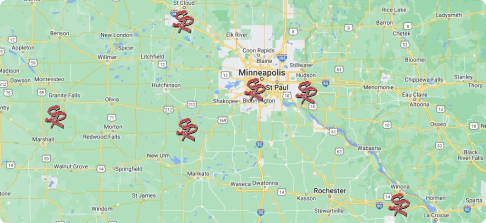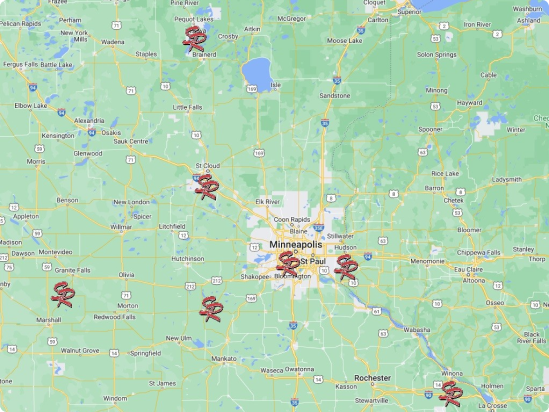For many people, enjoying moments on your front porch on a recliner during a thunderstorm feels calm and relaxing. However, the same thunderstorms might carry clouds that drop bits of frozen rain that can damage our roofs. How large does hail have to be to damage your roof? Various factors determine the amount of roof damage caused by hail; it’s not all about the size. These factors include wind speed, velocity, size, the type of roofing material, the condition and age of the roof, and the impact angle of the hail when it hits the roof.
Do you need a roofing replacement due to storm and hail damage? That depends. Learn more about how badly hail can damage your roof based on its size.
The Different Sizes of Hail
Different hail sizes can cause danger to your roof. These sizes can range from:
- 1/4-Inch Hail (Pea-Sized) to 1/2-Inch Hail (Marble-Sized)
This kind of hail rarely causes direct damage unless accompanied by strong winds. Milder hailstorms produce this hail for a short time, then shift to a steadier rainfall. Your roof may be able to withstand damage from ¼-inch and ½-inch hails. However, ½-inch hail can aggravate existing damage or damage an older roof.
- ¾-Inch to 1-Inch Hail (A Dime to Quarter-Sized)
Hailstones larger than ½ – inch should require you to call in a roof inspection. Find a reputable roofing company and, should they deem that your home has sustained hail damage, inform your insurance agent as well. Cracks and dents are common forms of damage caused by a dime to quarter-sized hail.
However, if the rainfall is severe, it can cause greater damage. Storm damage repair can become extensive, expensive, and potentially dangerous if left unaddressed. Talking to your agent helps you to know what your policy covers to determine the budget.
- 1¾ -Inch to 2-Inch Hail (Golf Ball-Sized)
Golf ball-sized hail can penetrate the softer parts of your roof, like plastic roof vents and ridge caps. This hail can damage shingles, flashing, and other roof parts. If accompanied by strong winds, it can also damage your house’s siding, harm some metal fixtures, and even break windows.
- 2-Inch Hail and Above
This type of hail is much larger than a golf ball and falls faster than any other. This type of hail can damage ridge caps and roof vents. It can also seep into the underlayment and other roof-sensitive areas shielded by metal and shingles. Strong hail can harm your roof’s metal fixtures, exposing its inner parts to water damage risk.
Signs That a Roof Has Sustained Hail Damage
The signs of hail damage depend on the intensity and size of the hail. The damage will probably be obvious if your house has been hit by hail above 1 inch. When high wind speeds accompany the hail, they can cause serious damage to your roof. Some common, easily notable signs of damage include cracked or broken windows. Others include:
Dents and Dings on Your Siding
Walking around your property, you can check the windowsills and siding for hail damage. If you see any dents in these areas, it signifies damage to your roof. Regardless of how small or faint the dents are, it’s advisable to seek a professional inspection of your roof.
Granules on Your Gutters
If you notice an abnormally large amount of black granules on your downspouts or gutters, it’s a sign of hail damage. Most of the time, the granules are a protective coating from the shingles. The coatings protect the shingles from the sun’s UV rays. If most were damaged by hail, it’s wise to get a roof replacement.
Broken Shingles/Tiles or Missing/Displaced Roofing Materials
Broken shingles, dents, and cracks are the most common signs of hail damage on composite or asphalt shingle roofs. Hail can be devastating to shingles. Tiles are stronger and more durable but can still crack, dislodge, or even break during severe hailstorms.


